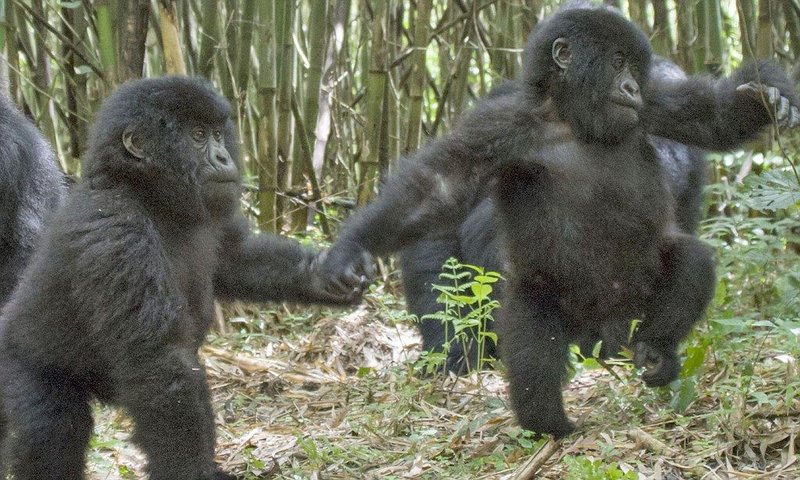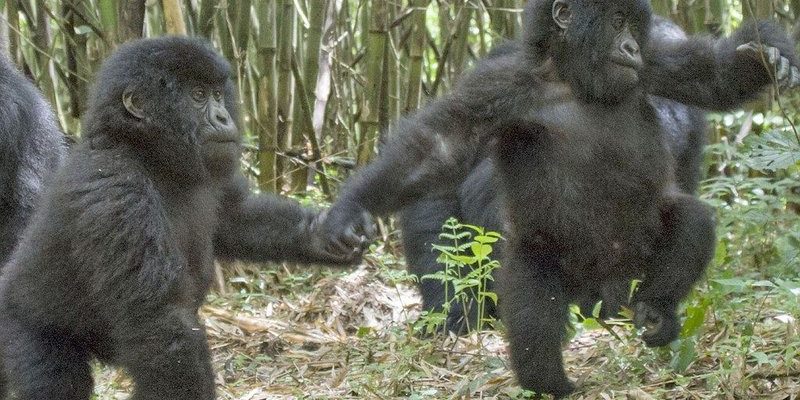
Gorilla infants depend on their mothers for everything, much like human babies. From the moment they’re born, they’re enveloped in a world of warmth and care. This nurturing process is so unique and specific to gorillas, it’s worth diving deeper into how they approach motherhood in the wild. Whether you’re a wildlife enthusiast or just curious about our distant relatives, let’s explore the fascinating journey of gorilla parenting.
The Role of the Mother Gorilla
Mother gorillas are the primary caregivers for their young. Right from birth, her main job is to keep her baby safe and fed. Newborn gorillas are incredibly vulnerable, weighing just about 4 to 5 pounds. They cling to their mothers, who carry them everywhere. Imagine a toddler who can’t quite walk yet—this is similar to how these tiny gorillas rely on their moms.
As the babies grow, mothers teach them essential survival skills. This involves everything from finding food to socializing with other gorillas. Gorilla mothers are patient teachers, often demonstrating how to peel fruit or build a nest for sleeping. Each interaction is a learning moment, showcasing the strong bond between mother and child.
Interestingly, mother gorillas are also known for their emotional intelligence. If a baby is distressed, a mother will soothe it with gentle grooming or affectionate nudges. This nurturing behavior not only comforts the infant but also helps foster a sense of security. Honestly, it’s heartwarming to see how these huge animals can be so gentle with their young.
The Importance of Family Structures
Gorillas live in groups called troops, which are often led by a dominant male known as a silverback. This social structure plays a crucial role in how young gorillas are raised. The silverback protects the troop from threats, which ensures the mothers can focus on their babies.
In these troops, young gorillas have the opportunity to interact with their peers. They play, wrestle, and explore under the watchful eyes of their mothers. This playtime is not just for fun; it’s essential for developing social skills. Through these interactions, they learn how to communicate and establish their own place within the group.
You might be wondering how the entire troop contributes to the upbringing of the young. Well, while the mother is the primary caregiver, other members of the troop often help out by babysitting or keeping an eye on the infants. This communal approach to parenting not only enriches the growing infants’ experiences but also strengthens social bonds within the group.
Feeding and Nutrition
When it comes to feeding, the diet of a baby gorilla heavily relies on its mother’s milk during the first few months. Gorillas are herbivores, primarily munching on leaves, stems, and fruits. After around six months, mothers begin to introduce solid foods. Imagine transitioning from baby formula to tasty solid meals—it’s a big step for these little creatures!
Gorilla mothers are selective about what they eat, and they pass this knowledge on to their young. For instance, they may show their babies which fruits are ripe and safe to eat. This knowledge is vital, ensuring that the young gorillas grow up healthy.
As the infants grow, they start mimicking their mothers’ eating habits. You’ll often see a young gorilla trying to chew on a leaf just like mom. This imitation is a natural part of their development—it’s how they learn to forage for food. The combination of milk and solid foods provides the necessary nutrition for strong growth, allowing young gorillas to become robust adults.
Grooming and Bonding
Grooming is an essential part of gorilla life; it’s not just about keeping clean. For young gorillas, grooming is a way to bond with their mothers and other troop members. Picture it as a form of affection—much like a mother brushing her child’s hair.
Through grooming, mothers help their babies feel secure and loved. This physical contact releases hormones that promote relaxation and happiness. It’s a practice seen across many animal species, but gorillas really do take the time to form deeper connections through it.
When young gorillas groom their mothers, or even other troop members, it helps them build relationships, too. These interactions teach them about trust and companionship, vital lessons for their future lives in the wild. Honestly, it’s beautiful to witness this nurturing behavior and how it reflects the complexity of gorilla social life.
Challenges in Raising Young Gorillas
Despite their strong nurturing instincts, raising young gorillas comes with its challenges. One significant threat is habitat loss due to deforestation and human encroachment. As their environment shrinks, the resources available for raising their young diminish, impacting their survival.
Another challenge is poaching. Gorillas are sometimes hunted for bushmeat, leaving infants orphaned and vulnerable. Without their mothers, these helpless young face tremendous odds. Conservation efforts are crucial not just for protecting gorillas but also for ensuring the survival of future generations.
You might wonder how the natural instincts of gorillas help them in these tough situations. Interestingly, even without their mothers, orphaned gorillas will try to mimic the behaviors they learned, like foraging for food. This instinctual behavior showcases their resilience, but it’s a harsh reality they face without proper support.
The Role of Conservation in Gorilla Parenting
Conservation efforts play a pivotal role in supporting gorilla families. Organizations work tirelessly to protect their natural habitats and educate communities about the importance of these magnificent animals. By focusing on preserving their environment, we help ensure that gorillas can safely raise their young.
Many conservation programs also aid in rehabilitating orphaned gorillas. These programs mimic the natural family structure by pairing orphans with other gorillas. This way, they can learn social behaviors and survival skills, preparing them for life in the wild.
The connection between conservation and how gorillas raise their young is undeniable. The healthier the population and environment, the more successful these families can be. It’s a reminder of our responsibility to protect these incredible creatures and their homes.
Gorillas are remarkable animals, and their approach to raising young is a blend of care, teaching, and community support. From tender grooming moments to playful interactions with their peers, every aspect of gorilla parenting reflects their unique social structure and emotional depth. Fortunately, with ongoing conservation efforts, there’s hope for these families to thrive in the wild.
As we learn more about how gorillas live and raise their young, it becomes clear how vital it is to support their habitats and populations. After all, ensuring they can continue their beautiful family traditions is a gift we owe to future generations. By understanding and appreciating these gentle giants, we’re taking steps towards a brighter future for gorillas everywhere.

